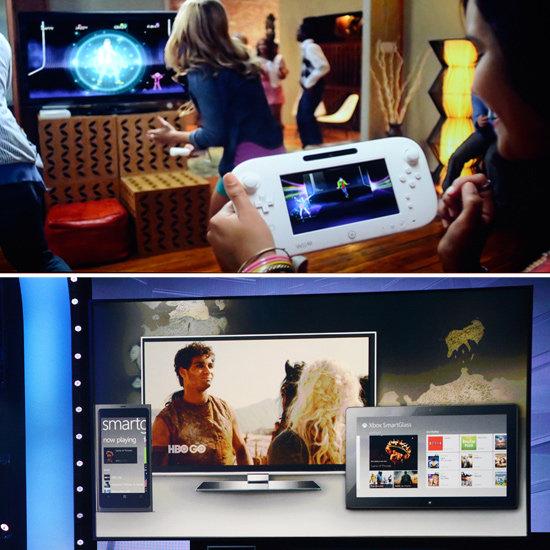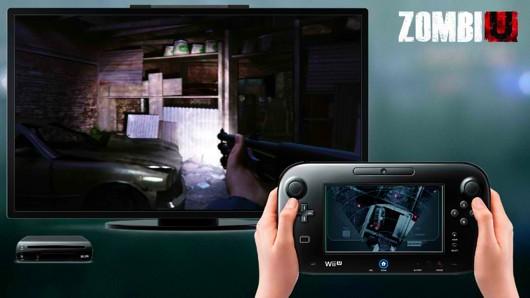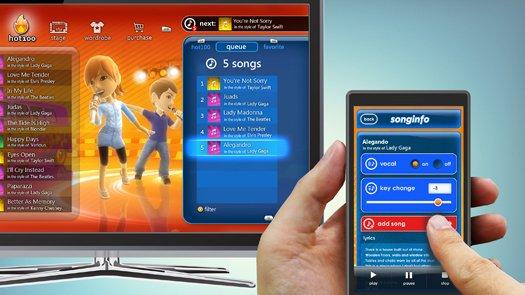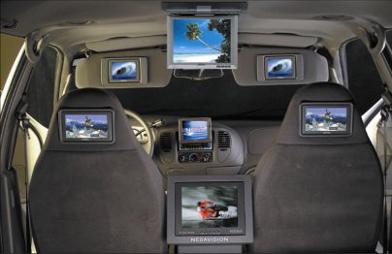- Wondering how to get Monopoly GO! free rolls? Well, you’ve come to the right place. In this guide, we provide you with a bunch of tips and tricks to get some free rolls for the hit new mobile game. We’ll …
Best Roblox Horror Games to Play Right Now – Updated Weekly
By Adele Wilson
Our Best Roblox Horror Games guide features the scariest and most creative experiences to play right now on the platform!The BEST Roblox Games of The Week – Games You Need To Play!
By Sho Roberts
Our feature shares our pick for the Best Roblox Games of the week! With our feature, we guarantee you'll find something new to play!Type Soul Clan Rarity Guide – All Legendary And Common Clans Listed!
By Nathan Ball
Wondering what your odds of rolling a particular Clan are? Wonder no more, with my handy Type Soul Clan Rarity guide.
Hands in your pocket: gaming’s misguided battle for your second screen
A few months ago, I talked about a shocking addiction rocking a huge amount of the population, including perhaps you yourself. The culprit? Mobile devices. Among smartphone owners, 80% are now so glued to their mini-PCs that they surf, IM and game while watching other media. And 15% of that 80? They do it instead of watching. Looking now at some of the major announcements from this year’s game conference season, it seems I’m definitely not the only one watching these numbers.

A few months ago, I talked about a shocking addiction rocking a huge amount of the population, including perhaps you yourself. The culprit? Mobile devices. Among smartphone owners, 80% are now so glued to their mini-PCs that they surf, IM and game while watching other media. And 15% of that 80? They do it instead of watching. Looking now at some of the major announcements from this year’s game conference season, it seems I’m definitely not the only one watching these numbers.
As the dust settles on E3 and the slew of post-E3 mini-conferences, one thing is clear: if mobile media multitasking is an addiction, the big tech. players want to be your pusher of choice. (Also, say “mobile media multitasking” ten times fast. You just can’t.) For some of them, this means replacing your handheld with their own, while for others it’s about winning over your attention span with unique content. Either way, it’s official: the battle for the second screen has begun.

Easily the boldest entrant? Nintendo and the Wii U. For those not in the know – or living under a rock – the Big N’s next machine looks to take the motion-controlled experience of the now-iconic Wii, and enhance through the addition of a tablet controller. The pitch? Add flexibility both to the way we game together, and the way we game alone. Key features include the ability to zap your console experience onto the HD tablet screen and continue playing by yourself should someone need the TV, and “asynchronous play:” experiences crafted to offer group play that feels different for those using Wii remotes, and those using the tablet screen.
On one hand, the Wii U is – in true Nintendo fashion – extremely unique. Experiences like the survival horror title ZombiU from Ubisoft, where players use the WiiU Game Pad as a survival kit, attest to the ability of the system to extend the boundaries of play; to bring gaming out of the screen the same way the Wii brought you into it. Moreover, the portable gamer in me can’t ignore the value of starting a game on your TV, and continuing it on the controller; adapting to interruptions seamlessly.
Yet despite what Nintendo would have you believe, I’d argue that the WiiU perhaps creates more problems than it solves – or at the very least leaves some tantalizing opportunities unexploited. At the level of play itself, Nintendo glosses over the way in which their asynchronous experiences are uneven; imbalanced additions of a second screen in ways that make one player footnotes to the fun of others. Take for example the case of Rayman Legends, where the WiiU Game Pad holder simply flits around the screen dropping ropes and platforms.

More dishearteningly, Nintendo has ascribed to the WiiU a loftier goal (and slogan) of “Together. Better.” Imbued it through marketing with the supposed power to cut through the social separation created by sitting in a living room, TV blaring, half the family on their phones and the other half on their computers. If Nintendo is to be believed, the addition of their second screen with its powers of asynchronous play will be enough to rip us away from the other second screens to which we’ve become so attached; to create a communal experience of play we’ve forgotten.
And so it is that the company commits the cardinal sin of trying to change consumer behaviour. Certainly, they had luck with the Wii, you could argue. The big difference there however was that Nintendo was offering us something completely new. Something we’d never even considered. They were creating consumer behaviour. By now, we’re all more than acquainted with the idea of multiscreen multitasking, and I’d wager to say that few of us feel like we need saving.
Ironically, couched somewhere between their discussion of one multiscreen mini-game and another, Nintendo mentioned a blip of a feature that I’d call the WiiU’s most competitive: its ability to be a universal remote. If the Big N is interested in taking on (or taking away) our phones and our computers, they’d be wise to travel much farther down the rabbit hole of utility for their Game Pad; selling it to the Nintendo fan by virtue of the games, and to everyone else on the strength of its ability to adapt to our living room lifestyle. To be a remote. An interactive buzzer for gameshows. A special features delivery system for movies on Netflix. Anything except a savior. Consumers don’t like being told they need a savior.

It’s here that Microsoft thinks they’re your horse to bet on. In their very own E3 conference this year, they took the stage to announce Smart Glass: functional window panes for your home that also double as augmented reality tablets. Okay, fine, that didn’t happen, but how cool would that be!? In truth, Smart Glass is Microsoft’s attempt to win over your eyeballs on the mobile frontier, with an approach a little less heavy handed than that of the WiiU.
While details are somewhat scant, the gist of Smart Glass is that of a companion app. Harnessing Xbox’s status as a “media machine,” Microsoft is hoping to deliver complimentary content that benefits your experience while gaming, watching TV, or streaming movies. Enjoying Game of Thrones? Why not pair it with an interactive map of Westeros so you can pinpoint exactly where all this killing is going on? Playing Mass Effect 3? Perhaps you should use your tablet as a mobile command center to check weaponry and manage items.
Where ubiquity is concerned, this approach certainly seems to capture the zeitgeist a little more than Nintendo’s “let father teach you” approach. By harnessing our existing devices, Smart Glass has the potential to make a compelling case for our time and attention. The key is Microsoft’s willingness to bend itself around our existing behaviors, and offer complementary experiences, rather than metaphorically teach us the error of our ways. What’s more, with the announcement of their new Surface tablet, the company is making a move towards providing us with a full ecosystem. It’s a lot easier to adapt to demands for our second screen business, so to speak, if we’re already purchasing the devices from the company offering them.

With that said, Editor-in-Chief Jim’s comments still stand. With no direct promise that Smart Glass and Surface are paving the way to us seeing Halo 4 on a tablet – and tacit admission that we’re headed for a world of one-off companion products, Microsoft ultimately falls on the opposite end of the spectrum as Nintendo: they arguably don’t go far enough. Instead, they seem to be hinging their products on the assumption that we’re singularly dedicated to the media we consume; that the answer to earning their way onto our second screens is by giving us more of the experience we’re seeing on our first.
And herein, ultimately, lies the rub: when I’m gaming, I love being absorbed in a world not my own, and dedicating the time to playing within it. But I’m not looking for an Inception–style level of immersion to take me one layer deeper. And when I’m watching TV, or movies? I’m not using my phone or tablet to bring myself deeper into the experience; if anything I’m doing just the opposite; engaging in a fleeting distraction with what excess parts of my attention span are left. And this is not to mention the amount of times I’m watching movies and TV shows from my computer over meals, looking only to take in the base experience on my way from one moment to the next.
And so all of this squabbling over the second screen seems to be missing the mark. To be shooting for a moving target, and looking to answer to a question nobody is asking. From one end we’re being told we need to ditch the evil screens tearing us apart to… use the ones that will bring us together? And from the other we’re being shown how much better it would be if we were just using these devices for the right things… like looking at maps. Call me crazy, but I think the answer may be a whole lot simpler than anyone is willing to consider.
In this case, the intersection of technologies might not actually be necessary. Sometimes, you should just leave well enough a-phone.
More articles...
Monopoly GO! Free Rolls – Links For Free Dice
By Glen Fox
Wondering how to get Monopoly GO! free rolls? Well, you’ve come to the right place. In this guide, we provide you with a bunch of tips and tricks to get some free rolls for the hit new mobile game. We’ll …Best Roblox Horror Games to Play Right Now – Updated Weekly
By Adele Wilson
Our Best Roblox Horror Games guide features the scariest and most creative experiences to play right now on the platform!The BEST Roblox Games of The Week – Games You Need To Play!
By Sho Roberts
Our feature shares our pick for the Best Roblox Games of the week! With our feature, we guarantee you'll find something new to play!Type Soul Clan Rarity Guide – All Legendary And Common Clans Listed!
By Nathan Ball
Wondering what your odds of rolling a particular Clan are? Wonder no more, with my handy Type Soul Clan Rarity guide.







